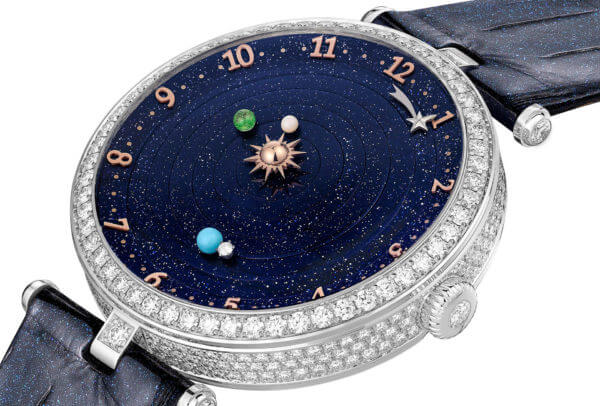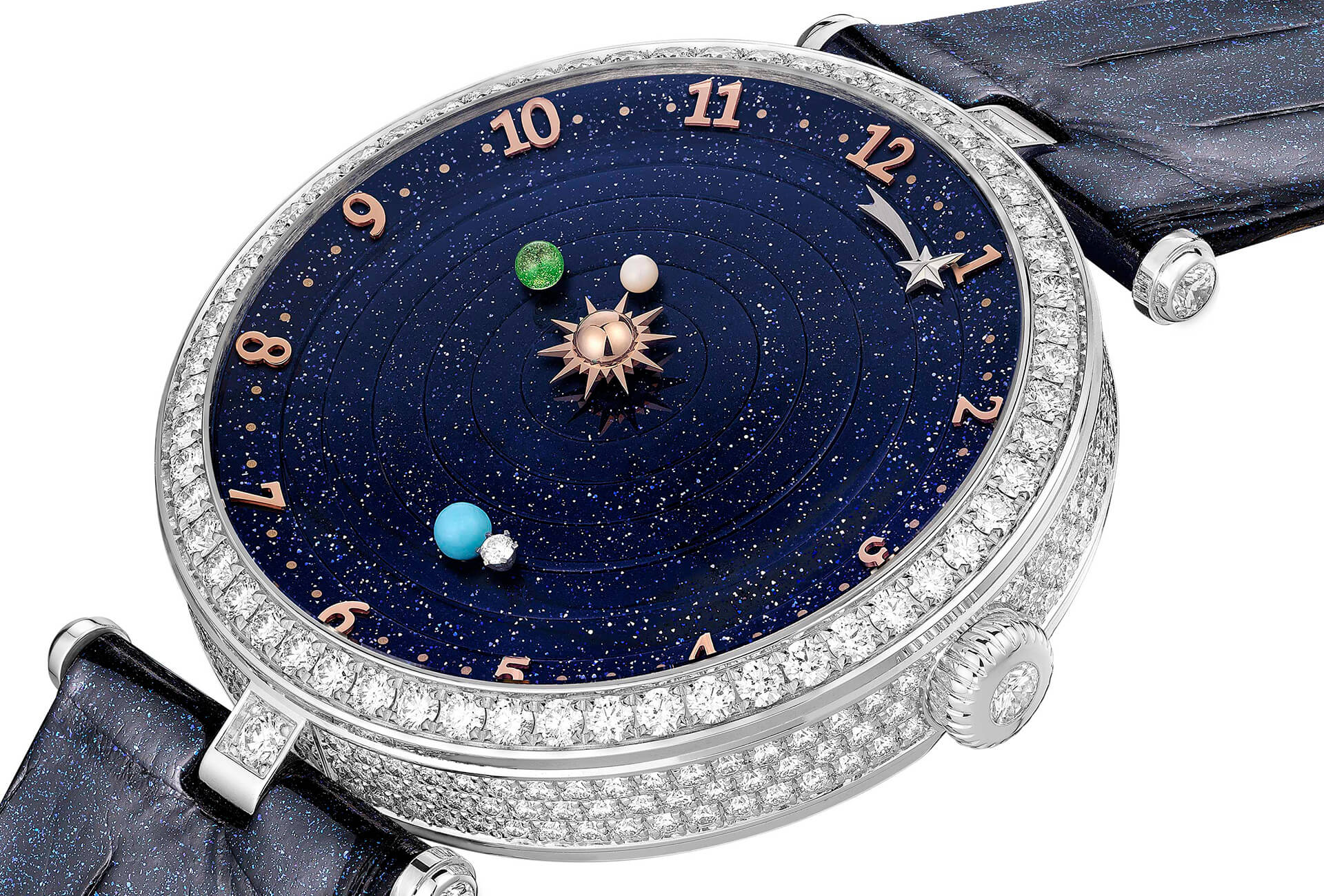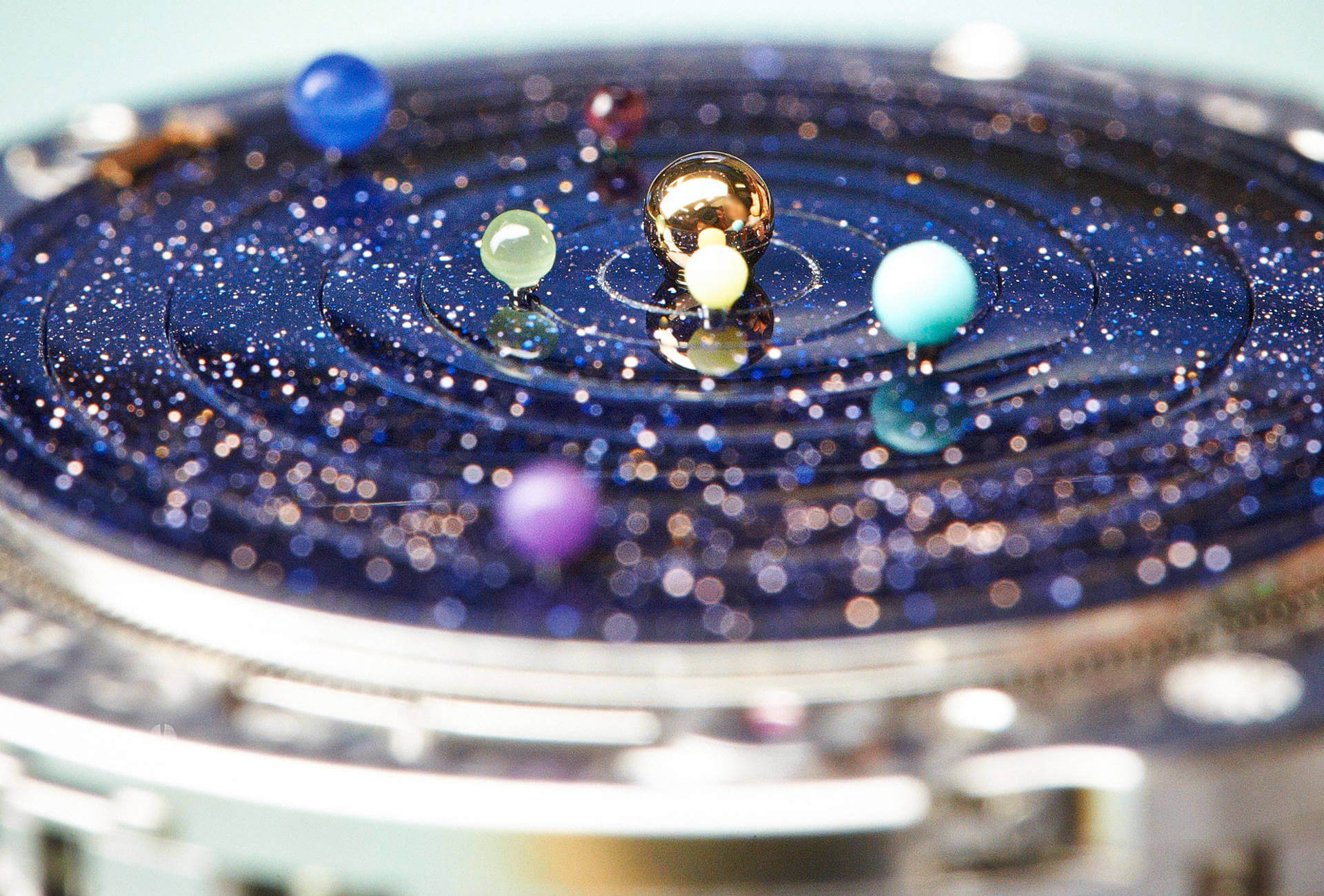Dials set with aventurine were as ubiquitous as tourbillons at the 2018 SIHH. Also called goldstone, the sparkly blue, gold-flecked mineral covers the full dial plates on the Parmigiani Fleurier Kalparisma Nova Galaxy and the A. Lange & Söhne Saxonia Thin. It is used to depict outer space on the dial of the Lady Arpels Planetarium and the Lady Arpels Nuit Féérique from Van Cleef & Arpels, and serves as a backdrop behind elongated, diamond-set Roman numerals on the Rotonde de Cartier Mysterious Hours watch.

There is a common myth surrounding aventurine, one that is repeated over and over again in press releases. So it would be interesting to get to the bottom of the story. Aventurine is widely stated to have been first noticed in a glass factory at Murano, near Venice, in either the 13th century or 18th century (depending on the source), when a glassmaker dropped a quantity of copper filings by accident (“par aventure”) into a pot of molten glass. This led to the name “aventurine.” However, there is also an actual mineral called aventurine, which looks slightly similar to the manufactured material. This begs the question: if the story about the accident in the glass factory is true, how is it that the real mineral is also called aventurine? Would it not have been named first? In the usual world of gemstones, the name game happens the other way around. First you discover a gem: say, diamond. Then you discover or create something that looks like it, and you call it an “imitation diamond,” or a “synthetic diamond.” In this case, it appears the reverse happened. The real thing was named after the fake thing.
My search for verification of this arcane point led me around several corners and ultimately to a 1949 issue of Gems & Gemology, the publication of the Gemological Institute of America. In his article on the subject, noted gemologist and author Robert Webster, F.G.A, begins: “The misconception shown by various authors as to the mode of formation of the so-called goldstone or ‘aventurine glass’ has prompted the writer to present this article.”
A real process in Murano
Webster debunks the story of the glassmaker’s error as being highly improbable – “a fable invented in order to preserve the true secret of its manufacture.” He says the effect could never have been achieved with copper filings, that the copper would have to have been deliberately shaped into triangular or hexagonal crystals in order to create the desired reflection of light. Also, the crystals would have had to be evenly distributed for best effect, which requires something other than spilling them randomly into a sea of molten glass. The only truth to the story is that the process was indeed developed in Murano. Webster says it was a closely guarded secret “and only carried out by a few of the highest Venetian families.”
The mineral aventurine is a type of quartz that gets its spangled appearance not from copper but from flakes of hematite or mica
And what about the real thing? The mineral aventurine is a type of quartz that gets its spangled appearance not from copper but from flakes of hematite or mica. At some point – Webster’s article doesn’t say when – this naturally occurring mineral also came to be called aventurine because of its resemblance to aventurine glass, and its sparkly appearance was called “aventurescence.” What was it called before that? Depending on the variety, it was (and still is) referred to as quartzite, sunstone, feldspar or often, mistakenly, labradorite. The imitation is often referred to as goldstone, aventurine glass or simply aventurine – and who’s to say this is a misrepresentation, given that the glass was named before the mineral? And here’s the crux of the matter: the glass is actually much nicer than the mineral. In fact, it seems likely that naming the mineral “aventurine” may have been an effort to elevate interest in the real thing, rather than the other way around. Either way, par aventure or not, it makes for a beautiful dial treatment.
















